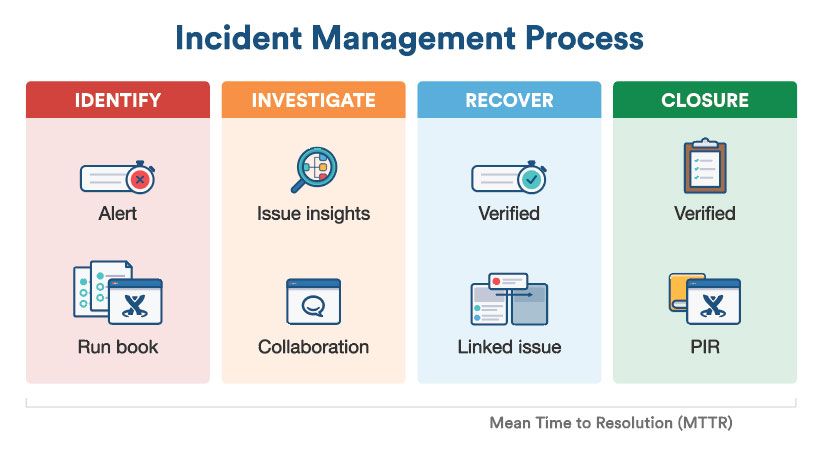Whether we like it or not, digitalization is at the core of economic evolution. Communication and collaboration in the business world, as well as global financial systems rely on powerful, ever-evolving computer applications to function.
Application Performance Management (APM) is the discipline of managing and monitoring those computer applications to ensure they’re performing normally, and within acceptable service levels.
Application performance management tools are critical to managing your systems, gathering performance metrics, and ensuring all your applications are doing what they were designed for and deployed to do.
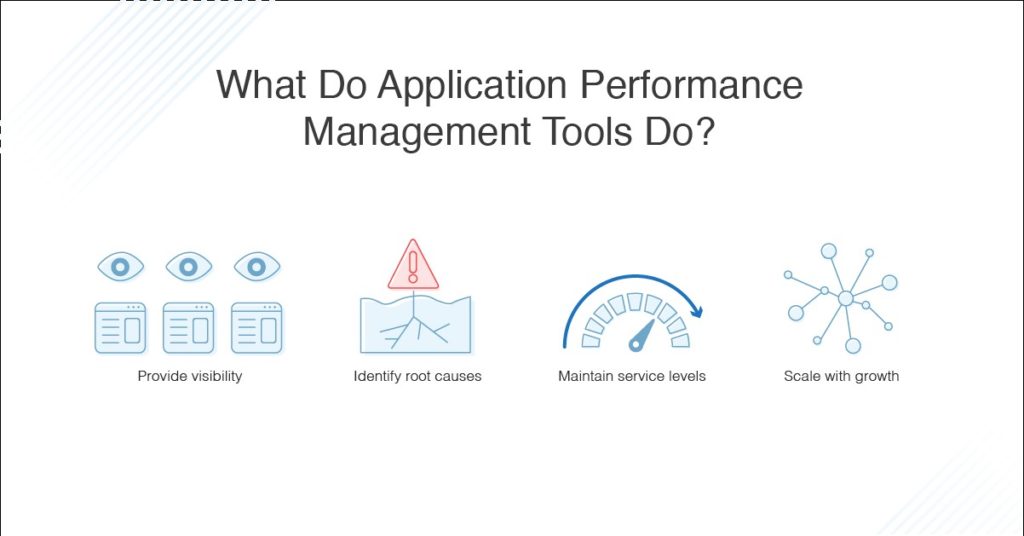
Image source: DNS Stuff
The importance of APM solutions
In this blog, we'll talk about the importance of application performance monitoring tools in the context of both unified communications and finance.
We'll cover topics including the ways in which effective application performance monitoring solutions can protect an organization's entire infrastructure, and help realize and improve business outcomes.
We'll look at how application performance issues can derail IT operations, and how monitoring applications and infrastructure components are vital to maintain control in dynamic environments.
Why is application performance management vital?
APM, also referred to as application performance monitoring, is crucial for maximum application output, minimum inconveniences, and improving business outcomes.
APM tools give digital teams the means to view and address the many irregularities within an IT ecosystem, that can impact an application’s performance. This is particularly important with the challenges of today's hybrid working world and the influx of mobile applications and communication platforms.
Without APM solutions, teams have no way of resolving the numerous problems that can arise. As well as collecting performance metrics, application performance monitoring solutions are important for a number of reasons, all of which serve to protect an organization's entire IT infrastructure:
-
Collecting performance data in real time, and analyzing it to identify potential problems.
-
Measure and monitor application performance, and prevent performance bottleneck
-
Carrying out end user experience monitoring, and user defined transaction profiling
-
Accurate root cause analysis
-
Collecting actionable insights to help optimize user experience
How is APM different from observability?
Application performance monitoring and observability both identify the underlying cause of problems.
While monitoring alerts users when something is wrong, observability can identify what’s happening, why, and how to fix the problem.
Observability
In IT, an observability solution can effectively analyze a system's output data, providing an assessment of system health. The entire IT environment is visible in context to interdependencies, resulting in faster, proactive problem detection and resolution.
Monitoring
Monitoring assesses the health of a system by collecting and analyzing data based on predefined parameters, such as a set of logs and performance related metrics. Monitoring creates rules and alerts for those resources that are not operating within specified parameters, and is particularly valuable in analyzing long-term trends and alerting.
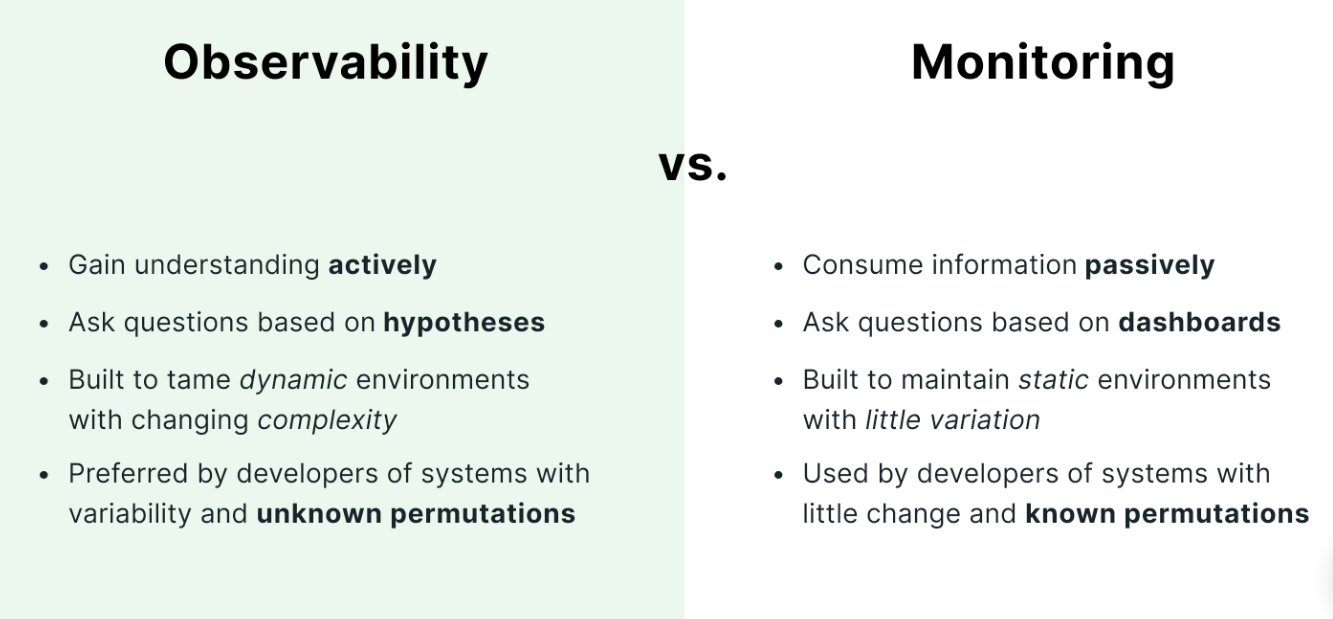
Image source: Chaos Genius
What application performance monitoring can do
Computer applications are constantly evolving, updating and becoming redundant. Mobile software applications, websites, and business apps are highly complex, often comprised of many millions of lines of code, with hundreds of interconnected digital services, hosted across multiple cloud services.
Application performance monitoring provides visibility into the entire application stack, including application framework, APIs, memory usage, operating system, real user monitoring, databases, web application servers, and middleware.
Infrastructure monitoring also samples factors such as CPU utilization, disk space, and network performance. Without all these insights, and the ability to collect data, an organization's systems would not function without performance issues and could not maintain service level agreements.
The technical benefits of application performance monitoring tools
The benefits of observing and monitoring application performance from a DevOps and technical point of view are many.
APM solutions benefit IT Operations, DBAs, DevOps engineers, Site Reliability Engineers, application developers etc. By deploying robust, specifically tailored APM tools and practices, tech teams have the benefit of many actionable insights within an IT infrastructure. Also known as application component deep dive, tracking each component of an IT infrastructure yields myriad benefits including:
-
An increase in application stability and uptime
-
A reduction in the number of performance related incidents
-
Improved response time and the ability to resolve performance problems more quickly
-
Visibility into application health
-
A potential marked improvement in infrastructure utilization
Load testing and stress testing using APM software can pick up performance bottlenecks on application components and APIs to ensure consistent performance under stress.
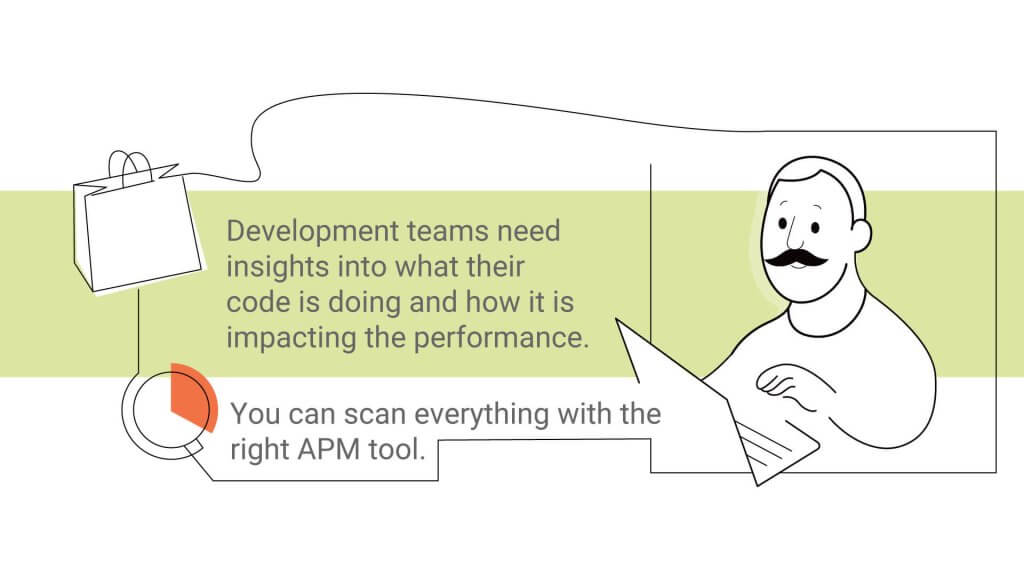
Image source: Hostpapa
The business benefits of monitoring and measuring application performance
Every organization is constantly looking to improve performance, and APM tools can help get them there. From increased revenue, and productivity to happier customers, a properly utilized application performance monitoring solution can elevate a business to the next level by greatly reducing risk and increasing returns. Here's how:
Reduced Mean Time To Recovery (MTTR)
Modern applications can be notoriously unreliable. Outages, performance issues and other critical incidents are bound to happen for a number of reasons.
MTTR is an important metric, revealing how much risk each new release or significant infrastructure change introduces. An APM tool helps achieve faster recovery time. How? Rather than responding reactively to an incident, APM solutions make it possible to proactively mitigate risks through analytics and performance data.
Image source: Atlassian
Recognizing and diagnosing software anomalies
Performance problems can include software bugs that can negatively impact a user experience, without actually causing an outage, and application performance monitoring can detect the exact root cause.
Fast, efficient diagnosis of performance issues can create better stability within an application, fuel product growth and reduce customer churn.
User-defined transaction profiling
This tracks every user’s activity within an application, creating a single business transaction with every user login, and showing all the back-end processes associated with that user session.
End user experience monitoring
We've discussed the many technical and business benefits of using application performance monitoring. APM tools consolidate these benefits into the most important metric when it comes to business outcomes - customer satisfaction.
Whether the goal is to cut unnecessary spending, reduce performance bottlenecks, improve product stability, track user behavior, implement machine learning capabilities, or modify an application component, deploying an APM platform means happier, more satisfied customers.
For more insights on the importance of customer experience read our blog Transaction Analytics: The key to improving customer experience
Application performance management in financial services
The financial industry has its own set of challenges which are different to other industries when it comes to application performance monitoring.
APM in financial services is in many ways even more important, as most organizations depend on online business transactions for their revenue.
Why APM is critical to financial transactions
Transactions are the lifeblood of a bank or financial institution's business-critical applications, so zero-fail app performance and throughput within the application environment are vital.
Even though transactions are subject to complex application performance problems, maintaining focus on the performance and execution of transactions can mean substantial increases in revenue and productivity.
Transaction speed and system stability are integral factors in customer experience, therefore customer retention. So by speeding up transactions, you can increase margins and improve relationships with customers
A transaction-based APM approach
As revenue depends on transactions, you can improve performance and increase revenue through transaction-based APM.
Monitor all real user transactions
Monitor your applications from your customers’ end user experience perspective. As end users of your applications submit transactions to your systems for processing, it's vital to monitor every transaction end-to-end, throughout the entire lifecycle. This will reveal the exact duration of each transaction, and will precisely pinpoint any slow-downs or failures.
Improve transaction performance
Once you've gained insights as to user activity and individual transaction performance, this data can be used to make applications faster. Measure performance of the most requested transactions with the slowest response times, and you can provide a far better user experience.
Difference between APM tools & APM platforms
System administrators within an organization will often implement application performance management tools before moving on to APM platforms. Let’s look at the differences.
APM tools
APM tools usually address one specific aspect of application performance, and pinpoint only specialized issues. Over time, organizations can find themselves using multiple APM tools that may not necessarily integrate with one another or provide comprehensive insight into the application environment. This siloed approach makes it difficult to identify root causes or resolve application performance issues.
APM platforms
APM platforms provide a single consolidated platform using artificial intelligence, machine learning and automation to deliver a contextually precise analysis of the application environment.
A modern APM platform designed specifically for cloud-native environments can deliver coverage across the full stack, encompassing the entire hybrid multi-cloud network. APM platforms allow organizations to continuously monitor for system degradation, resource usage and performance anomalies for prompt root cause analysis.
How cloud-native applications make APM challenging
Cloud-native apps are composed of a number of loosely coupled and highly-cohesive microservices working together to form a distributed system. These are often packaged and run in containers, making it difficult for traditional APM and observability tools to see inside.
While dividing cloud-native apps into numerous microservices increases its flexibility and scalability, the potential downside is that when an app is divided into more pieces, it could compromise the app’s security and the ability to monitor.
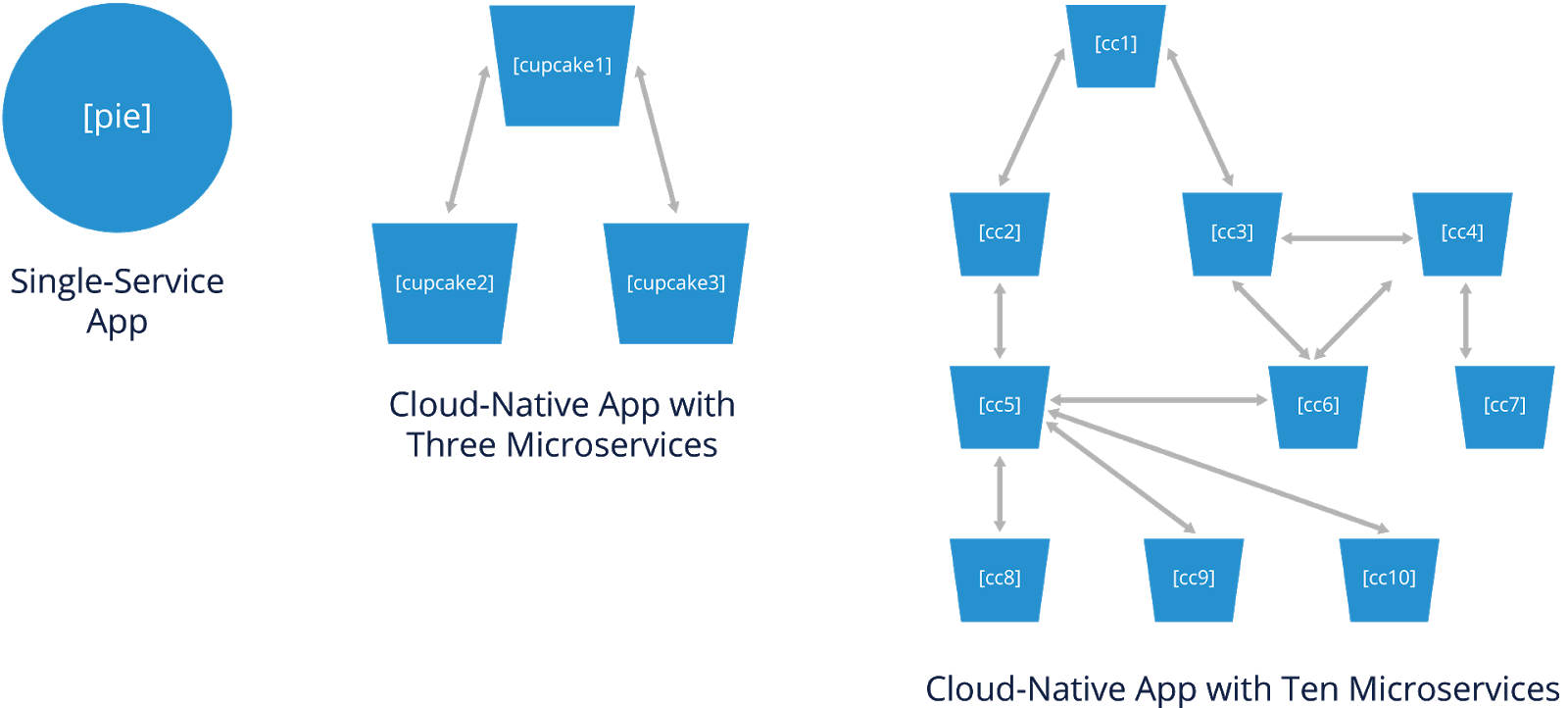
Image source: Ambassador
Enterprise observability and monitoring tools must have the ability to integrate seamlessly into the cloud-native application environments that it supports, with deployment and instrumentation processes fully automated.
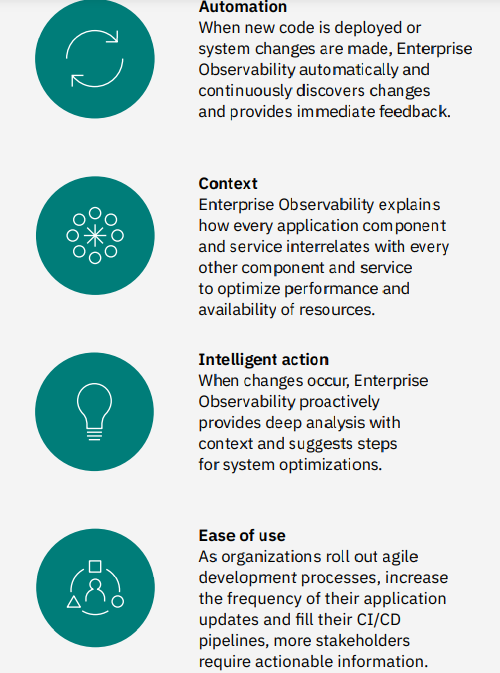
Image source: IBM
Analytics and reporting
There are many different aspects to APM monitoring, including container monitoring, infrastructure monitoring, API monitoring, synthetic monitoring, network monitoring, database monitoring, log monitoring, and end-user monitoring.
Companies often run many different individual monitoring software tools at once, especially when they're holding onto legacy applications. With so many network components to keep track of, this makes analytics and reporting incredibly difficult.
How IR can help
Digitalization in today's modern world means there is a complex array of technologies constantly running. Whether it's Unified Communications and Collaboration (UCC), Payments or Infrastructure, our experience management and monitoring solutions can simplify that complexity.
Hundreds of the world's largest organizations rely on our solutions to optimize their business-critical systems
We provide insights, monitoring and support to keep payment hubs, unified communications ecosystems and contact centers running as they should, optimizing the commerce that connects our global economies.
Payment Transactions
Simplify service management by using one tool to monitor and manage multiple vendor solutions, across on-prem and cloud deployment models with IR Transact.


Request a demo
Unified Communications and Collaboration
Unified communications and collaboration platforms are the basis of our most essential business systems.
Hybrid working models now demand a seamless user experience increases, and the need for high up-time, fast problem resolution, and intelligent insight has never been more critical. IR Collaborate optimizes the collaboration systems that connect the global workplace.

Enterprise UC
Get end-to-end visibility across your entire multi-vendor UC ecosystem, so that you can quickly identify, troubleshoot and resolve UC related issues.
Service Providers
Get access to real-time data and insights across all your customers on-premises, cloud or hybrid environments.
Contact Centers
Reduce helpdesk calls and troubleshooting time with automated intelligent alerts that predict problems based on trends and real-time events.
Experience Testing
Optimize customer satisfaction and user experience with outside-in, end-to-end voice, web and video testing.
Meeting Rooms
Ensure seamless user experience in meeting rooms and collaboration spaces with remote management and monitoring for voice and video conference tools.

